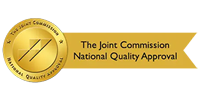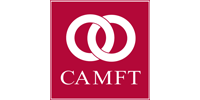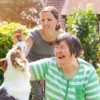Cognitive behavioral therapy (CBT) was developed in the 1960s by psychiatrist, Aaron Beck. CBT is a structured, short-term, goal-oriented form of psychotherapy that “targets multiple areas of potential vulnerability (e.g., cognitive, behavioral, affective) with developmentally-guided strategies and traverses multiple intervention pathways.” Young people enter adolescence with outdated emotional coping mechanisms.
As kids mature, they are faced with new challenges that demand more refined and complex coping tactics. CBT encompasses numerous strategies, focusing on an array of topics, such as extinction, habituation, modeling, cognitive restructuring, problem-solving, and the development of coping strategies, mastery, and a sense of self-control. The steps of CBT include the following, provided by Psychology Today:
- Identify troubling situations and/ or conditions in your life (e.g., divorce, a medical condition, anger, grief, etc.).
- Become aware of your emotions, thoughts, and beliefs connected to these troubling situations.
- Identify inaccurate and/ or negative thinking that may be contributing to your troubles.
- Reshape inaccurate and/ or negative thinking. To help facilitate this step, a therapist may encourage you to ask yourself if your view of the situation is based off an inaccurate perception of the situation or off facts.
CBT is often used with adolescents as it is recognized as an effective treatment method for youth struggling with a wide range of mental health issues including eating disorders, substance use, anxiety, and depression. Verywell Mind illuminates several benefits of cognitive behavioral therapy for children, some of which include the following:
- Honed ability to shift negative thought patterns toward positive thinking.
- Enhanced self-compassion.
- Increased ability to identify positive responses to stress.
- Improved communication with others.
- Better able to interrupt thoughts that lead to addictive or other self-destructive behaviors.
- Learn to skillfully manage and reduce irrational anxiety, fears, and phobias.
- Enriched self-esteem.
- Become more adept at navigating social situations and interactions, which reinforces healthy adolescent social and emotional development.
Through CBT an adolescent will learn to understand that the way they behave has a direct correlation with their personal attitudes and emotional problems. The CBT framework aims to help young people break unhealthy behavioral patterns by identifying and replacing dysfunctional patterns with positive thinking patterns. It focuses on challenging and changing unhelpful cognitive distortions and behaviors, improving emotional regulation, and developing personal coping strategies to problem solve effectively.
Further Information and Support
For most of us, life can be very stressful, leading us to feel emotionally charged, which can cause anxiety, panic attacks, depression, and getting stuck in a cycle of being burdened with negative thoughts. Navigating through the challenges and emotional turmoil of life can be overwhelming, but you do not have to go through it alone. Engage Treatment is a Joint Commission Accredited professional psychological practice. We specialize in treating children, teens, and young adults struggling with depression and anxiety through community-focused treatment plans that incorporate a carefully selected combination of therapeutic interventions. Our compassionate, multidisciplinary practitioners are devoted to providing the highest quality of care that helps ignite positive change and enables clients to reach optimal health and well-being. Please do not hesitate to reach out for guidance. We are happy to answer questions and provide you with any additional information. Feel free to call us at 805-497-0605 or email us at [email protected]. You are also welcomed to get in touch by filling out our contact form. We look forward to connecting and having the opportunity to discuss how we might best be able to support you.
Contact Us
Westlake Campus:
IOP Program
2625 Townsgate Road, Suite 210
Westlake Village, California 91361
Agoura Campus:
Private Therapy & Parenting Program
30300 Agoura Road, Suite 250
Agoura Hills, CA 91301
805-497-0605
805-371-4862











© 2023 Engage Treatment Program, Inc. All Rights Reserved.
LGBTQ Friendly
About
• About Engage
• Our Team
• Career Opportunities
• Individual / Family Therapy






